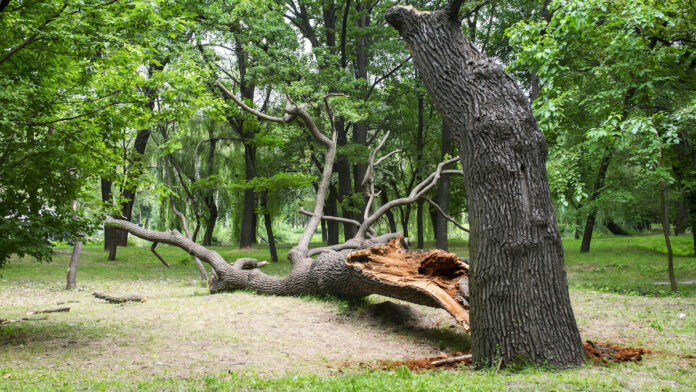
It’s a dark, rainy night, and you’re tucked safe and snug into bed.
The forecast has been calling for thunderstorms all week, and the howling winds outside your window confirm that the weatherman’s prediction was correct.
Although you know the weather outside is becoming a torrent of rain, thunder, and lightning outside, you feel safe and warm in bed, and the sound of the rain against your window is slowly relaxing you to sleep.
Just as you doze off, you hear it – that life-changing crash.
The mighty oak tree that once provided cooling shade for your backyard has been split in two by a bolt of lightning, sending one of its biggest limbs to the ground below, crushing your flattening your backyard shed like a pancake in the process.

At first, you’re stunned, but then the thought hits you; “This is going to cost me a fortune!”
After that, your next thought will likely be whether or not your home insurance will cover this.
It’s a simple question to ask; whether or not your insurance policy covers the cost of tree removal on your property. Should you call your insurance provider before you call a local tree removal company like TrufastTreeService?
However, it all depends on the specific scenario and the surrounding circumstances of your situation. Therefore, the truth is that a typical home insurance policy will cover tree removal in some cases.
But in other cases, it won’t.
In the following article, we’ll break down a few different scenarios to explain whether or not your home insurance policy will cover tree removal.
Fallen Trees And Property Damage
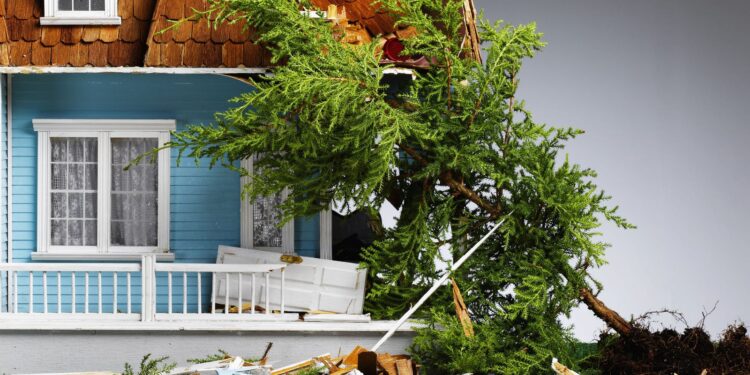
Typically, if a tree has fallen, causing damage to either your home or property, there’s a good chance that your insurance policy will cover any costs associated with repairing the damages and removing the remnants of a tree from your property.
With that being said, there are a few factors that will determine if your insurance covers the damage and removal.
For instance, if your insurance provider is unaware of a shed or any other structure on your property, damages to said structure won’t likely be covered.
Or, if you have a shed, fence, or outbuilding built in contravention to your local building codes, this could also potentially affect your insurance coverage.
Fallen Trees, No Property Damage
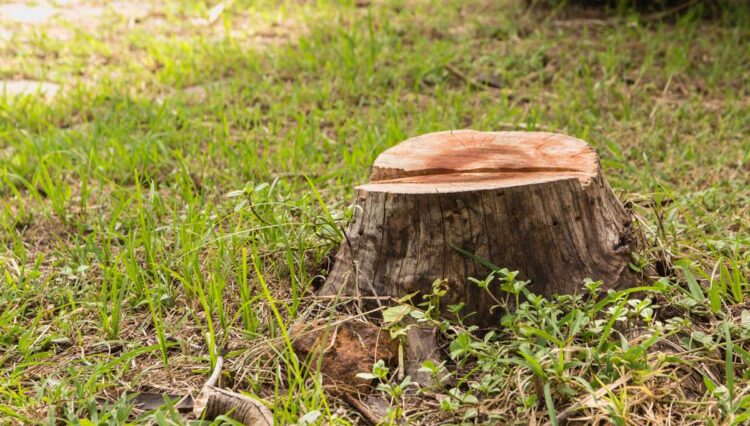
If a tree falls on your property but doesn’t damage your home, or any of its surrounding structures, the costs of removal won’t likely be covered by your insurance.
However, even if there is no immediate damage to your home or property, there are a few other scenarios when home insurance might cover the cost to remove the fallen tree.
This typically happens when a tree falls and blocks a driveway or access to a home. For instance, if a homeowner is disabled and a tree falls and blocks their access ramp.
Generally, trimming your trees and pruning any vegetation surrounding your home is considered as general maintenance, which is why insurance companies won’t cover tree removal unless it has already caused damage to any of your property.
Fallen Trees On Neighboring Property
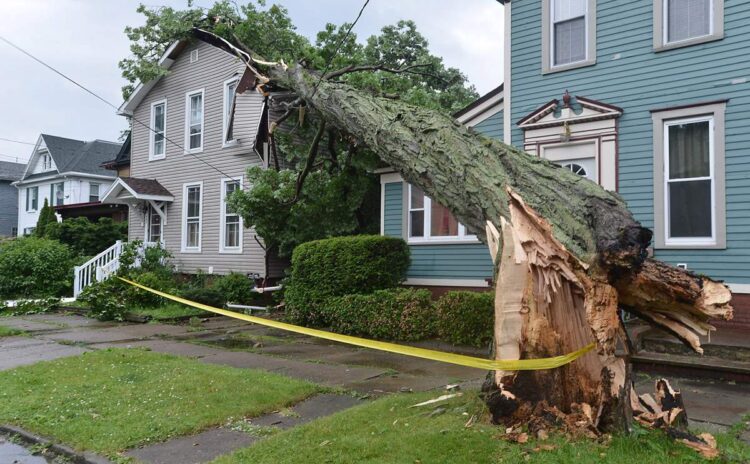
If a tree has fallen and caused damage to your neighbor’s property, they’ll need to file a claim under their own home insurance policy.
However, you and your insurance may still be held liable for the damages, especially if you’ve been warned about the danger and have failed to address the problem.
The same thing goes if a tree has fallen on your home or property from a neighboring property.
You’ll need to pursue a claim through your home insurance, but your neighbor’s insurance may be held liable under certain circumstances.
If The Tree Is Still Standing
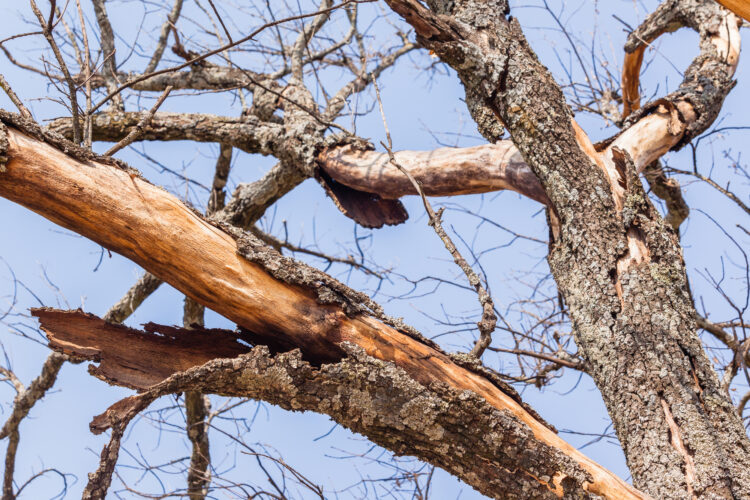
Unfortunately, if a tree has not fallen, either from rot or during a storm, your insurance policy won’t likely cover the cost of having it removed.
Once again, if a tree is rotting or shows signs of being ready to fall, this is typically considered routine yard maintenance, which is generally the homeowner’s responsibility.
But aside from homeowners insurance, there are still a few alternative tree removal options, which might be able to save you from dishing out the cash yourself.
Alternative Tree Removal Suggestions
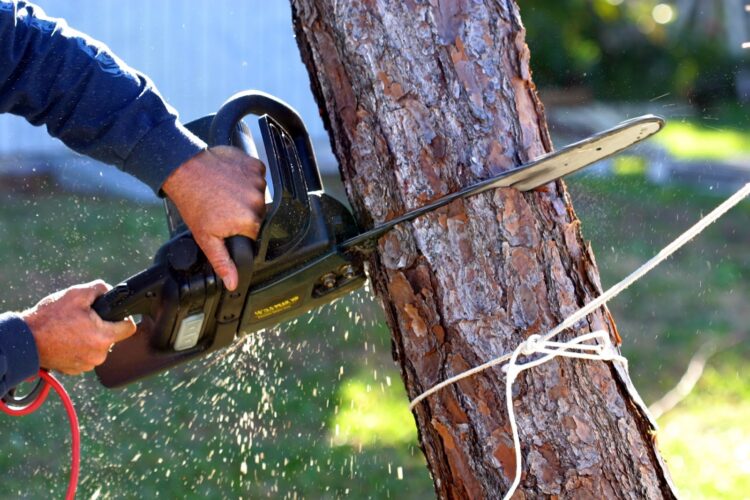
Although it’s not always an option, some homeowners may be able to have a tree removed from their properties, completely free of charge, by contacting their local electricity or utility providers.
However, this is usually only an option if the tree or any of its branches are at risk of damage to the electrical wires or utility lines that run to the home from the mainline out on the street.
Therefore, if you have a tree on your property, which has started to encroach on your home’s main connections to its supply lines, don’t hesitate to contact your providers to see if they can help.
Again, this isn’t always going to be an option.
Reaching out on Facebook to ask if any friends have a chainsaw and can help you remove the tree will sometimes work, especially if you have friends who need the firewood that a tree can provide. Getting the community to help you remove the tree is one of the cheapest ways.
But if the removal of an intact tree isn’t going to be covered under your homeowner’s insurance policy, contacting your local utility companies is always an option.
Finally, if a tree has fallen on a city street and is blocking either the road or your driveway access, you might be able to contact your local municipal government to have the obstruction removed free of charge.
Check With Your Insurance Provider

In the end, insurance companies will typically offer different levels and types of coverage depending on a wide range of factors, such as your home’s geographic location.
Therefore, there’s no clearcut answer as to whether or not your specific insurance policy will cover tree removal.
With that said, the best thing to do is to contact your insurance provider and ask them directly about tree removal on your property.











